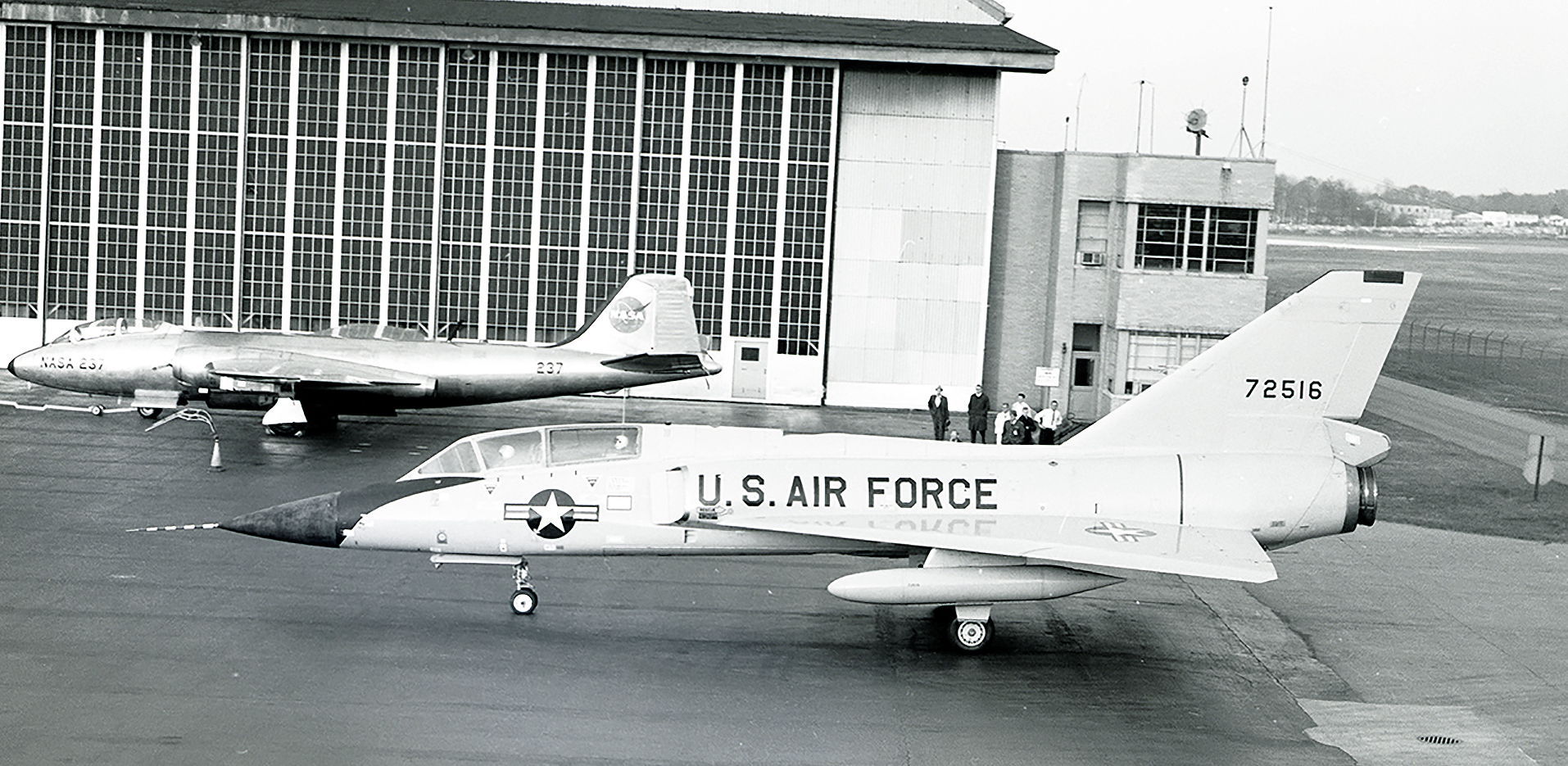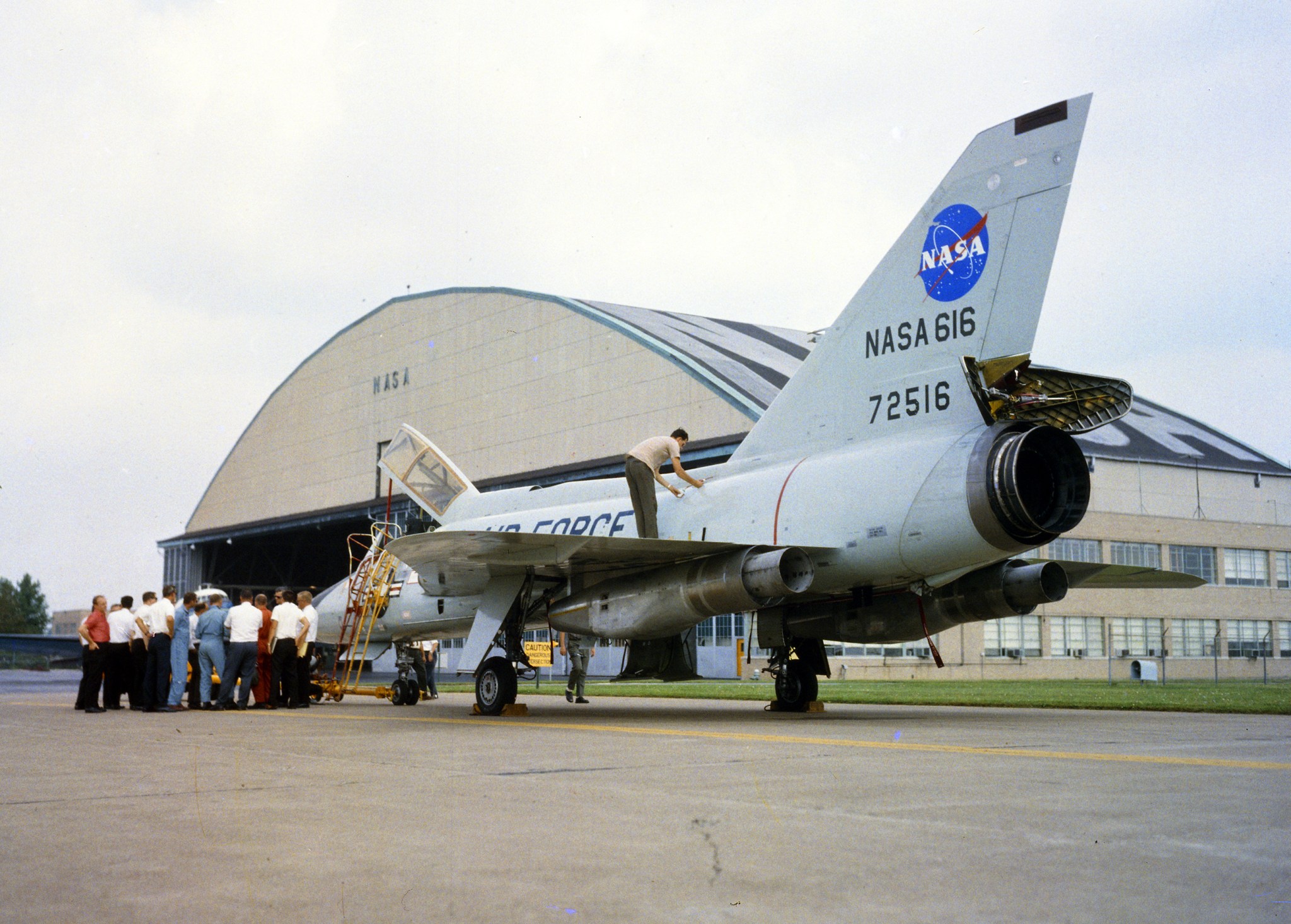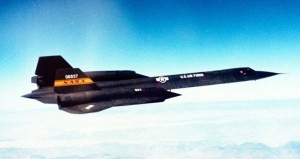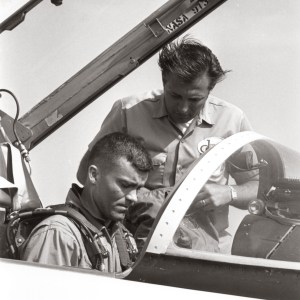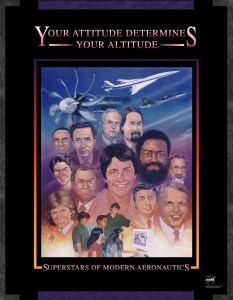On October 31, 1966 a US Air Force F-106B Delta Dart descended upon the Cleveland Hopkins Airport and taxied over to the Lewis Research Center’s hangar (now Glenn). In the coming days, Lewis engineers began the lengthy process of converting the military interceptor into a research aircraft.
Lewis obtained the F-106B, whose delta wings were geometrically similar to Boeing’s proposed supersonic transport aircraft, to study the effect of its unique airframe on various experimental inlet and nozzle designs. The F-106B could test full-scale versions of these concepts at transonic speeds, something that could not be accomplished in Lewis’ supersonic wind tunnels.
Convair built the F-106B (tail number NASA 616) in 1958, and the Air Force used it to test ejection seats and radar systems. At Lewis, technicians removed 2,500 pounds of weapon system hardware, mounted a fuel tank in the missile bay, and installed two engine nacelles underneath the wings.
Engineers mounted two General Electric J85 engines in the nacelles—a standard J85 under the right wing and an experimentally modified version under the left. This allowed researchers to compare the performance of the modified engine to that of the standard engine under identical conditions. The F-106B was powered by its own Pratt & Whitney J75.
The F-106B’s first research flight took place on June 3, 1968. The pilot flew the aircraft, while the co-pilot in the rear cockpit operated the two J85s. The 1,100-mile-per-hour flights were flown at 30,000 feet along a 200-mile path over Lake Erie to keep the sonic booms away from populated areas.
The F-106B flew over 300 flights for the program that analyzed six supersonic nozzle variations and two inlets. The F‒106B also tested inlet configurations for Lewis’ noise reduction research. The center transferred the aircraft in 1979 to Langley Research Center, which utilized it for several programs before its retirement in 1991.
Robert S. Arrighi
NASA Glenn Research Center

























